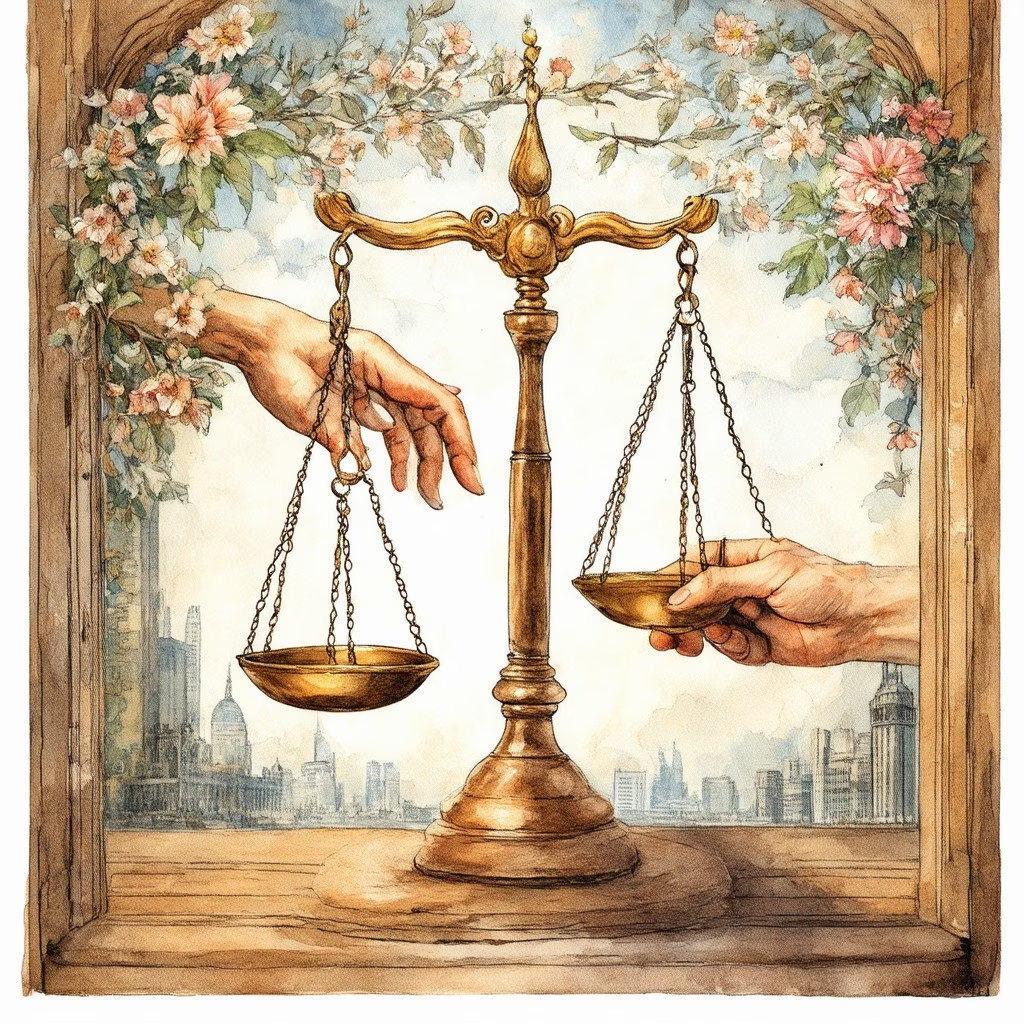Key Takeaways
- Free Legal Aid Services: Most legal aid organizations offer free assistance to individuals earning at or below 125% of the federal poverty level, making legal help accessible for those in financial hardship.
- Sliding Scale Fees: Some legal aid providers implement a sliding scale fee based on income, allowing those with slightly higher earnings to afford necessary legal support.
- Eligibility Criteria: Many states allow individuals with incomes up to 200% of the federal poverty level to qualify for legal aid, broadening access to essential legal services.
- Local Resources: Utilize local legal aid offices, such as Maryland Legal Aid and the Pro Bono Resource Center, to find free legal help tailored to your specific needs.
- Understanding “Indigent”: Being classified as indigent opens the door to various legal aid options, emphasizing the importance of knowing eligibility for assistance programs.
- State-Specific Guidelines: Income limits for legal aid vary by state; it’s crucial to check local guidelines to determine eligibility for assistance in your area.
In today’s complex legal landscape, understanding aid legal services is crucial for individuals seeking justice without the burden of exorbitant costs. This article delves into the essential aspects of legal aid, including the costs associated with hiring a legal aid attorney, the income limits that determine eligibility for assistance, and how to access free legal help in your state. We will explore the various factors influencing legal aid services, such as the maximum income thresholds and the resources available for checking these limits. Additionally, we will provide insights on how to find a free attorney for divorce and the organizations dedicated to offering legal assistance for divorce cases. By the end of this article, you will have a comprehensive understanding of how to navigate the world of legal aid, ensuring that you can access the support you need, regardless of your financial situation. Join us as we uncover the pathways to obtaining legal aid services and the vital resources available to you.
Understanding the Costs of Legal Aid Services
Legal aid services are designed to provide essential legal assistance to individuals who cannot afford traditional legal representation. Understanding the costs associated with these services is crucial for those seeking help. Legal aid lawyers typically offer their services at no cost or at a significantly reduced fee, focusing on assisting low-income individuals with various legal issues, including family law, housing, immigration, and public benefits.
Cost Structure
- Free Services: Most legal aid offices provide free legal assistance to eligible clients, primarily those with incomes at or below 125% of the federal poverty level. This ensures that individuals facing financial hardship can access necessary legal support without the burden of fees.
- Sliding Scale Fees: Some legal aid organizations may implement a sliding scale fee structure based on income. This allows clients with slightly higher incomes to access services at a reduced rate, making legal aid more accessible to a broader range of individuals.
Eligibility
Legal aid services are generally aimed at individuals and families experiencing financial hardship. Eligibility criteria can vary by state and organization, but many legal aid offices provide assistance to those with incomes up to 200% of the federal poverty level. This broad eligibility helps ensure that more people can receive the legal aid they need.
For comprehensive assistance, it is advisable to contact your local legal aid office directly to determine eligibility and available services. You can find more information on legal aid services available in your area by visiting [LawHelp.org](https://www.lawhelp.org), which connects users with local legal aid offices and resources. Additionally, resources like [Gov Guider](https://govguider.com/understanding-legal-aid-financial-assistance-income-limits-costs-and-resources-for-low-income-families-seeking-free-legal-help/) can help individuals find legal assistance and understand their rights.

Understanding the Costs of Legal Aid Services
When considering aid legal services, understanding the costs associated with legal aid is crucial. Legal aid services are designed to provide assistance to individuals who cannot afford legal representation. While many legal aid organizations offer services for free or at a reduced cost, there may still be some fees involved depending on the specific services required. It’s essential to clarify these costs upfront to avoid any surprises.
Typically, legal aid organizations operate on a sliding scale based on income, meaning that those with lower incomes may qualify for free legal help, while those with slightly higher incomes might pay a nominal fee. For example, individuals seeking a legal aid attorney for divorce may find that the costs vary significantly based on their financial situation and the complexity of their case.
Factors Influencing Legal Aid Fees
Several factors can influence the fees associated with legal aid services:
- Income Level: As mentioned, many legal aid organizations use a sliding scale based on income. In New York, for instance, the income limit for legal aid eligibility varies based on the type of legal assistance required and household size. Generally, for civil legal aid, the income threshold is set at 200% of the federal poverty level. As of 2023, this means that an individual must earn no more than approximately $27,180 annually, while a family of four should not exceed about $55,500. It’s advisable to check the latest guidelines from the Legal Services Corporation (LSC) or local legal aid organizations.
- Type of Legal Issue: The nature of the legal issue can also affect costs. Certain cases, such as those involving domestic violence or housing matters, may have different criteria or may prioritize assistance regardless of income.
- Location: Legal aid services can vary by state and even by city. For example, legal aid services in Oklahoma may differ from those in Oregon, impacting the availability and cost of services.
How to Get a Free Lawyer in MD?
To obtain a free lawyer in Maryland, individuals can explore several resources designed to assist those in need of legal representation. Here are key options:
- Maryland Legal Aid: This organization offers comprehensive free civil legal services to financially eligible individuals across 12 office locations in Maryland. Their services cover various legal issues, including housing, family law, and public benefits. For more information, visit their official website at www.mdlab.org.
- Pro Bono Resource Center of Maryland: This center connects low-income individuals with volunteer attorneys who provide free legal assistance. They focus on civil cases and can be reached at www.probonomd.org.
- Local Law Schools: Many law schools in Maryland, such as the University of Maryland Francis King Carey School of Law and the Catholic University of America Columbus School of Law, have legal clinics where law students provide free legal services under the supervision of licensed attorneys. These clinics often focus on specific areas of law, including family law and immigration.
- Maryland State Bar Association (MSBA): The MSBA offers a Lawyer Referral Service that can help individuals find pro bono legal assistance. They can be contacted at www.msba.org.
- Government Programs: The Maryland Department of Human Services provides legal assistance for certain populations, including those facing domestic violence or needing help with public benefits. More information can be found on their website at www.dhs.maryland.gov.
- Beware of Scams: It is crucial to be aware of recent scams where individuals pose as Maryland Legal Aid employees requesting fees. Always verify the identity of anyone offering legal services and ensure they are affiliated with legitimate organizations.
By utilizing these resources, individuals in Maryland can access the legal support they need without incurring costs.
Accessing Free Legal Help in Maryland
Accessing free legal help in Maryland is essential for those who cannot afford legal representation. Various organizations and resources are available to provide legal aid services. Here are some notable options:
- Maryland Legal Aid: This organization is a primary resource for free legal assistance, offering services in areas such as family law, housing, and public benefits.
- Pro Bono Resource Center: This center connects individuals with volunteer attorneys who can assist with civil legal matters.
- Law School Clinics: Many law schools in Maryland offer legal clinics where students provide free legal services under supervision, focusing on various legal issues.
- Community Organizations: Local nonprofits often provide legal assistance or can direct individuals to appropriate legal aid services.
For more detailed information on how to access these services, visit this guide on accessing free legal services.
Organizations Offering Free Legal Services
Several organizations in Maryland are dedicated to providing free legal services to those in need. Here are some key players:
- Maryland Legal Aid: Offers a wide range of legal services to low-income individuals.
- Pro Bono Resource Center of Maryland: Focuses on connecting low-income individuals with volunteer attorneys.
- Local Law Schools: Provide legal clinics where law students assist with legal issues under supervision.
- Maryland State Bar Association: Offers a Lawyer Referral Service to help find pro bono assistance.
These organizations play a crucial role in ensuring that individuals have access to legal aid, helping to bridge the gap for those who cannot afford traditional legal services.
What is it called when you can’t afford a lawyer?
When you can’t afford a lawyer, you may be considered “indigent,” which refers to individuals who lack the financial resources to hire legal representation. This status opens the door to various legal aid options designed to assist low-income individuals in navigating their legal challenges. Understanding the term “indigent” is crucial for accessing the right legal aid services available in your area.
Exploring Legal Aid Options for Low-Income Individuals
For those classified as indigent, several avenues exist to obtain legal assistance:
- Legal Aid Organizations: Many states have established legal aid organizations that offer free or low-cost legal services to individuals meeting specific income criteria. These organizations typically focus on civil matters, such as family law, housing disputes, and public benefits. To find a local legal aid office, visit the Legal Services Corporation.
- Pro Bono Representation: Pro bono services are provided by attorneys who volunteer their time to assist individuals unable to afford legal fees. The American Bar Association maintains a directory of pro bono attorneys willing to take on cases at no charge.
- Public Defenders: In criminal cases, if you cannot afford a lawyer, the court will appoint a public defender to represent you. Public defenders are government-employed attorneys dedicated to defending individuals who cannot afford private legal representation.
- Law School Clinics: Many law schools operate legal clinics where law students, under the supervision of licensed attorneys, provide free or low-cost legal assistance. These clinics often specialize in areas such as immigration, family law, or consumer rights.
- Online Legal Resources: Websites like Nolo and FindLaw offer extensive information on various legal topics, helping individuals understand their rights and navigate legal processes without a lawyer.
Understanding the Term “Indigent”
The term “indigent” is essential in the context of legal aid, as it defines the eligibility for various assistance programs. Being classified as indigent means you may qualify for legal aid services, which can significantly alleviate the burden of legal costs. Each state has its own criteria for determining indigency, often based on income levels and family size. For instance, Understanding legal aid can provide insights into how these criteria are established and what resources are available for those in need.

What is the maximum income to qualify for legal aid?
Understanding the maximum income limits for legal aid is crucial for individuals seeking legal aid. These limits vary by state and are designed to ensure that assistance is directed to those who genuinely need it. In general, legal aid programs assess income based on the federal poverty guidelines, which are updated annually. For example, in many states, individuals earning less than 125% of the federal poverty level may qualify for legal aid services.
Determining Maximum Income Limits for Legal Aid
To determine the maximum income limits for legal aid, applicants must consider their household size and total gross income. For instance, in Alberta, individuals with a gross income of up to $30,000 may qualify for legal representation in various cases, including criminal, family, and immigration matters. It’s essential to note that these thresholds can differ based on the type of legal issue and the applicant’s financial situation. Families with dependents often have different income limits compared to single individuals.
For the most accurate and up-to-date information regarding legal aid eligibility, including potential changes in income limits or additional requirements, individuals are encouraged to consult the official Legal Services Corporation website or contact their local legal aid office.
State-Specific Income Guidelines for Legal Aid
Each state has its own guidelines for legal aid eligibility, which can significantly impact the assistance available to applicants. For example, LegalZoom provides resources that outline the specific income thresholds for various states, including Oklahoma legal aid and Oregon legal aid. Understanding these state-specific guidelines is vital for individuals seeking legal assistance.
For comprehensive guidance, refer to the American Bar Association and local legal aid organizations, which can provide tailored information based on individual circumstances and needs.
How much should I pay for a lawyer?
Understanding the costs associated with hiring a lawyer is crucial for anyone seeking aid legal services. The cost of hiring a lawyer can vary significantly based on several factors, including the lawyer’s experience, the complexity of the case, and geographical location. Here’s a comprehensive breakdown of what you can expect:
- Hourly Rates: Lawyers typically charge by the hour, with rates ranging from $100 to $500 or more, depending on the state and the lawyer’s expertise. For example, in states like California and New York, hourly rates can exceed $300, while in states like Texas or Florida, rates may start around $150.
- Flat Fees: For specific services, such as drafting a will or handling an uncontested divorce, lawyers may offer flat fees. These can range from $500 to $5,000, depending on the service complexity.
- Contingency Fees: In personal injury cases, lawyers often work on a contingency fee basis, meaning they only get paid if you win the case. This fee typically ranges from 25% to 40% of the settlement amount.
- Retainer Fees: Some lawyers require a retainer, an upfront payment that secures their services. This fee can vary widely, often starting at $1,000 and going up based on the expected amount of work.
- Geographical Variations: Legal fees can differ greatly by region. For instance, urban areas generally have higher rates compared to rural areas. According to a 2023 survey by the National Law Journal, the average hourly rate for lawyers in metropolitan areas is approximately 20% higher than in non-metropolitan areas.
- Specialization: Lawyers specializing in niche areas, such as intellectual property or corporate law, may charge higher rates due to their specialized knowledge and skills.
- Additional Costs: Be aware of additional costs that may arise, such as court fees, filing fees, and costs for expert witnesses. These can add hundreds or thousands of dollars to your total legal expenses.
For more detailed information on lawyer fees by state, you can refer to resources like the American Bar Association or Legal Services Corporation, which provide insights into average rates and practices. Understanding these factors can help you budget effectively for legal services and ensure you are prepared for the costs involved.
Comparing Legal Aid Services vs. Private Lawyers
When considering legal aid versus hiring a private lawyer, it’s essential to weigh the benefits and limitations of each option. Here are some key points to consider:
- Cost: Legal aid services often provide free or low-cost assistance based on income eligibility, making them an excellent option for low-income individuals. In contrast, private lawyers typically charge hourly rates or flat fees, which can be prohibitive for many.
- Availability: Legal aid organizations may have limited resources and staff, which can affect the availability of services. Private lawyers, however, may offer more personalized attention and flexibility in scheduling.
- Expertise: While many legal aid attorneys are skilled and knowledgeable, private lawyers may have more experience in specific areas of law, particularly in complex cases.
- Case Types: Legal aid services often focus on specific types of cases, such as family law, housing, or public benefits. If your case falls outside these areas, a private lawyer may be necessary.
For those seeking legal assistance for divorce or other family law matters, options like free legal help or legal aid services can provide valuable resources. Understanding the differences between these options can help you make an informed decision about your legal needs.
Legal Aid Resources and Organizations
Legal Aid Society: A Key Resource for Assistance
The Legal Aid Society is one of the most prominent organizations providing aid legal services across the United States. They offer comprehensive legal assistance to low-income individuals, focusing on various issues such as housing, family law, and public benefits. Their services are designed to ensure that everyone, regardless of their financial situation, has access to legal advice and representation. For those seeking help, the Legal Aid Society can be a vital resource, providing not only legal aid attorneys but also information on how to navigate the complexities of the legal system. You can find more about their services on their [official website](https://www.legalaidnyc.org/).
Legal Services Corporation: Supporting Legal Aid Nationwide
The Legal Services Corporation (LSC) plays a crucial role in funding legal aid programs throughout the country. Established by Congress, LSC provides financial support to various legal aid organizations, ensuring that low-income individuals receive the legal assistance they need. They focus on areas such as family law, housing, and consumer protection, making them an essential partner in the fight for justice. For more information on their initiatives and how they support legal aid services, visit the [Legal Services Corporation website](https://www.lsc.gov/).




